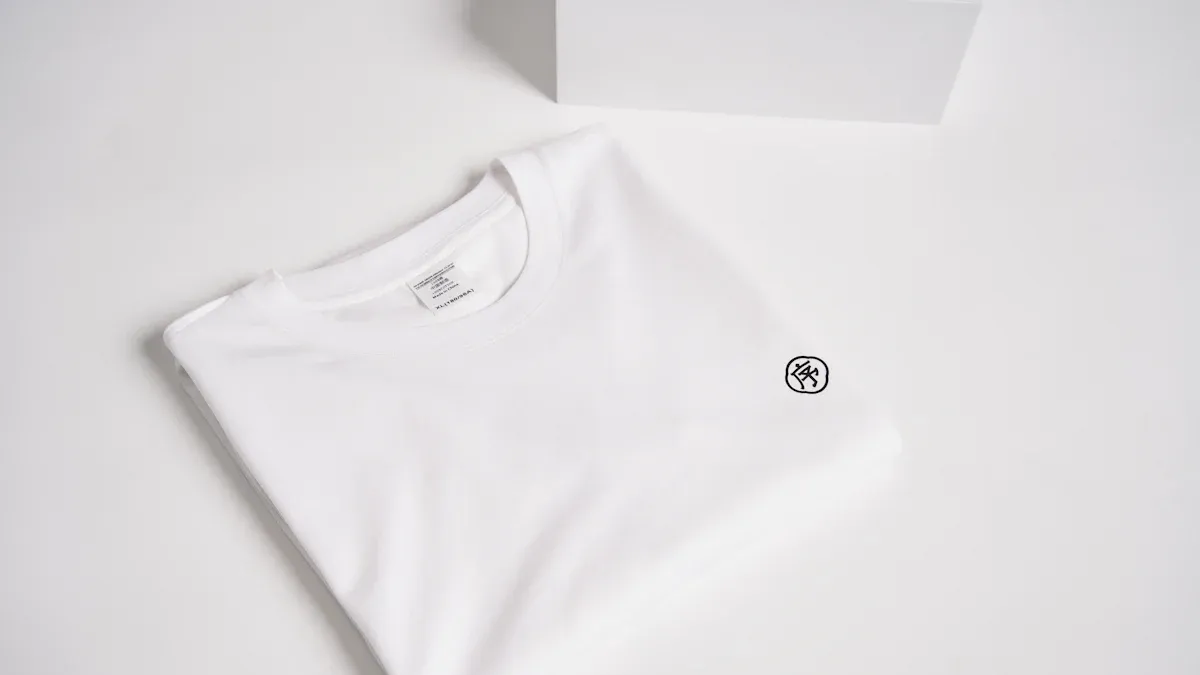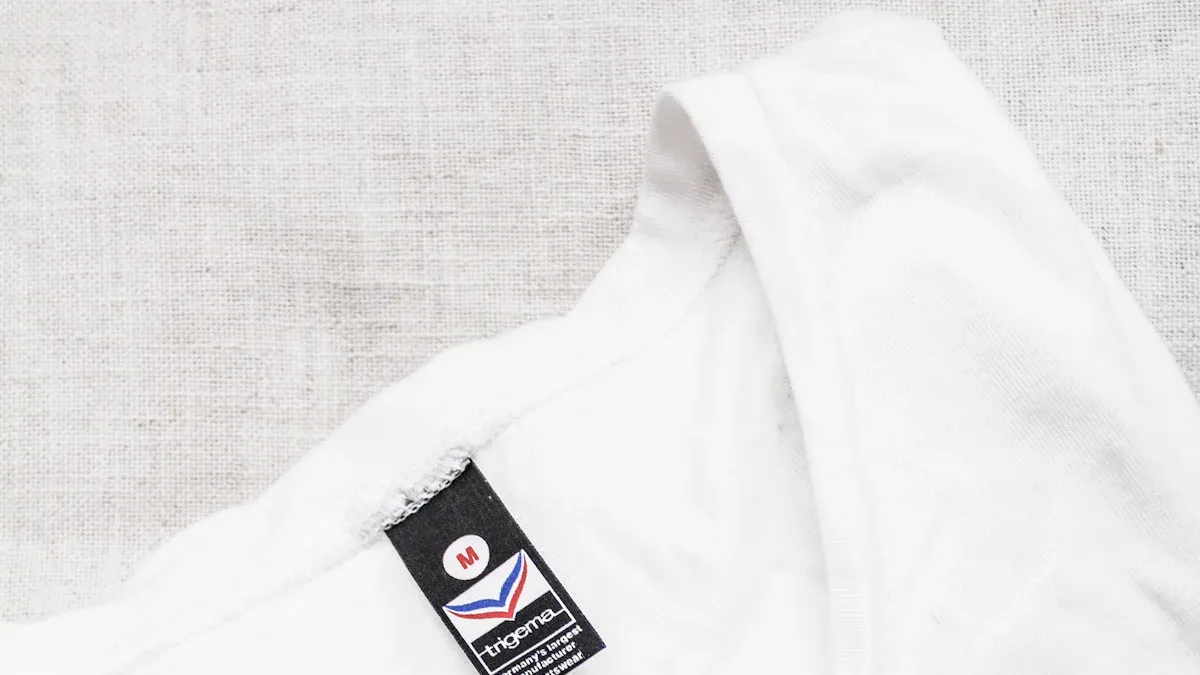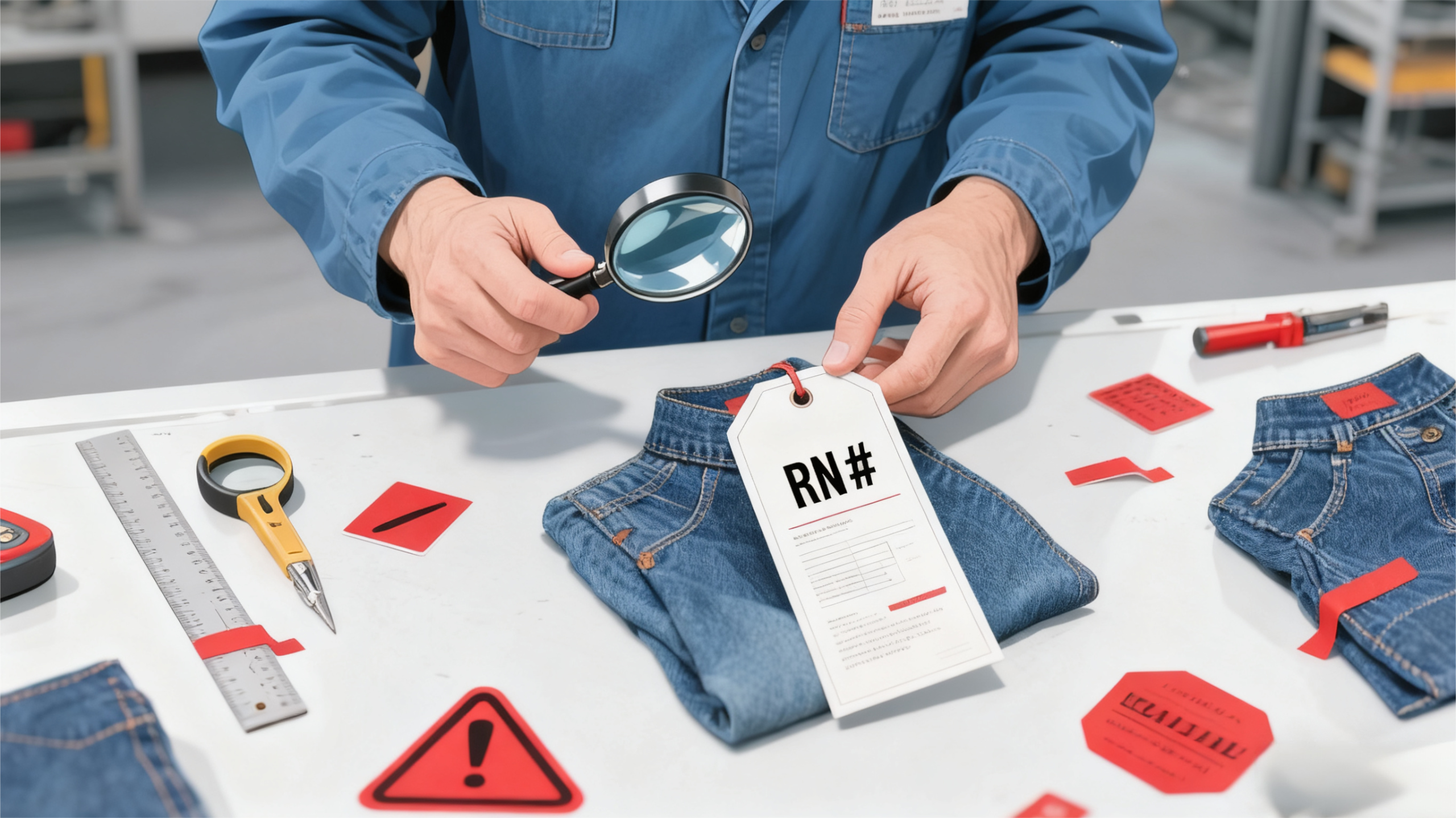
You may notice a label with an RN number for apparel when shopping for clothes. This unique number helps you identify the manufacturer or importer of a garment. The Federal Trade Commission (FTC) issues RN numbers, but not every apparel business must have one. RN numbers increase transparency and allow you to check who made your clothes. Understanding RN numbers can help you make informed choices and spot authentic products.
Tip: RN numbers make it easier for you to research brands and ensure product authenticity.
Key Takeaways
RN numbers help you identify the manufacturer or importer of your clothing, increasing transparency in the apparel industry.
You can find RN numbers on clothing labels, usually near the care instructions, making it easy to verify the source of your garments.
Using RN numbers allows you to research brands and confirm product authenticity, helping you make informed purchasing decisions.
RN numbers play a crucial role in product recalls, allowing you to check if your clothing is affected and ensuring your safety.
Not all brands are required to have RN numbers; they are optional, but many choose to register for transparency and compliance.
RN Number for Apparel: What It Means

Definition and Purpose
You often see the rn number for apparel on clothing labels in stores across the United States. This number stands for Registered Identification Number. The Federal Trade Commission (FTC) assigns it to businesses that manufacture, import, distribute, or sell textile, wool, or fur products. The rn number for apparel helps you identify the company behind a garment. It creates a clear link between the product and its source.
The main purpose of this number is to support accountability in the clothing industry. It gives you a way to check who made your clothes. Manufacturers and importers use it to comply with ftc labeling rules. These rules require clear identification on textile products. The rn number for apparel also helps you spot authentic items and avoid counterfeits.
Note: The rn number for apparel is not the same as a style number or SKU. It always points to the business, not the specific design.
FTC Issuance and Voluntary Registration
The FTC issues RN numbers to businesses that request them. You do not need an RN number to sell clothing in the United States, but many companies choose to register. Voluntary registration shows a commitment to transparency and compliance with ftc labeling rules. When a business applies, the FTC checks that it meets the requirements for textile, wool, or fur products.
You can trust that an RN number means the company has taken steps to follow industry standards. This process helps you feel confident about the products you buy. Businesses use RN numbers to simplify labeling and meet legal obligations.
Where to Find RN Numbers
You can find RN numbers on most clothing labels. The industry follows guidelines to make these numbers easy for you to locate. Here are common places to look:
RN numbers appear on labels that are easy to read and access.
Labels should not hide RN numbers in seams or hard-to-find spots.
For shirts and tops, the RN number often sits inside the center of the neck area, near the country of origin label.
If you check the label, you will usually see the RN number printed alongside other important information. This placement helps you verify the manufacturer quickly.
Tip: Always check the label before you buy. The RN number can help you research the company and confirm the product’s authenticity.
Why RN Numbers Matter in Apparel
Identifying Manufacturers and Importers
You want to know who made your clothes. The rn number for apparel gives you a direct way to find out. Each RN number acts as a unique code that links a garment to its manufacturer or importer. The Federal Trade Commission assigns these numbers to businesses in the textile industry. When you see an RN number, you can trace the product back to the company that made or imported it. This system helps the FTC investigate products and resolve issues quickly. You gain confidence because you know exactly where your clothes come from.
Tip: If you have questions about a brand or product, use the RN number to look up the company behind it.
Enhancing Credibility and Trust
You want to trust the brands you buy from. RN numbers help build consumer trust by making it easy to verify the source of a garment. When you see an RN number on a label, you know the business registered with the FTC. This registration shows the company values transparency. You feel more secure because you can check the legitimacy of the brand. Companies that display RN numbers show they care about honesty and accountability.
Here are ways RN numbers boost consumer trust:
You can research the manufacturer before making a purchase.
You know the company follows FTC guidelines.
You feel confident about the authenticity of your clothes.
You see that the business supports transparency in the supply chain.
Note: Brands that use RN numbers often earn higher consumer trust because they make it easier for you to verify their identity.
Role in Recalls and Authenticity
You want to stay safe when buying clothes. RN numbers play a key role during product recalls. If a problem arises, the RN number helps trace garments back to the manufacturer or importer. This process ensures accountability and transparency in the supply chain. You can check if your clothes are part of a recall by using the RN number. This system protects you from unsafe or counterfeit products.
RN Number Benefit | How It Helps You |
|---|---|
Recall Tracking | You find out if your item is affected |
Authenticity Check | You confirm the brand and source |
Supply Chain Safety | You see that companies follow rules |
You rely on RN numbers to make informed choices. You know that brands using RN numbers care about your safety and satisfaction. This builds consumer trust and helps you avoid risks.
Alert: Always check the RN number if you hear about a recall or want to confirm a product’s authenticity.
US Clothing Label Requirements and RN Numbers

Legal Compliance Overview
You need to understand how RN numbers fit into broader us clothing label requirements. The FTC sets strict rules for labeling garments sold in the United States. You must follow these rules to maintain compliance and avoid penalties. The RN number acts as a shortcut for manufacturer identification, which is one of the main us clothing label requirements. You can use either your full business name or an RN number on the label to meet this compliance standard.
Here is a table showing key us clothing label requirements and how RN numbers fit in:
Requirement | Description |
|---|---|
Manufacturer Identification | Use either the full business name or an RN number issued by the FTC. |
Care Labeling Rule | Must provide care instructions for at least one safe cleaning method, including warnings if necessary. |
Label Durability and Legibility | Labels must remain attached and legible throughout the garment’s useful life. |
Specific Material Labeling | Additional requirements for specific materials like wool, including mandatory percentage disclosure. |
If you fail to meet compliance, you risk financial penalties, mandatory recalls, and damage to your brand reputation. The FTC can issue cease-and-desist orders, start investigations, and even file lawsuits in federal court. You must keep your labels accurate and up to date to maintain compliance and protect your business.
Note: Compliance with us clothing label requirements helps you avoid costly disruptions and builds trust with your customers.
RN Number vs. Other Label Identifiers
You may wonder how RN numbers compare to other label identifiers. The RN number is unique to your company and issued by the FTC. You use it to meet compliance for manufacturer identification. Other identifiers, like style numbers or SKUs, help you track inventory but do not meet compliance for us clothing label requirements.
Here is a comparison of US and EU regulations:
Aspect | US Regulations | EU Regulations |
|---|---|---|
Manufacturer ID | RN number or business name required | Generally not mandated on consumer labels |
Fiber content disclosure | Mandatory | Mandatory, but terminology may vary |
Country of origin | Mandatory | Not uniformly required across all garments |
Care instructions | ASTM symbols (ASTM D5489) | GINETEX symbol system prevalent |
You save space on your labels by using an RN number instead of a long business name. You also make compliance easier for your team. Both US and EU require fiber content disclosure, but only the US uses RN numbers for compliance. You must use the RN number correctly to meet us clothing label requirements and avoid compliance issues.
Tip: Always check that your RN number is current and registered with the FTC to maintain compliance.
Using and Looking Up RN Numbers
How Consumers Can Use RN Numbers
You can use RN numbers to check who made your clothes. When you see an RN number on a label, you can look it up to find the manufacturer or brand. This process helps you make sure the product is real and not a fake. RN numbers also make it easier for you to trust the brand because you know exactly who stands behind the product. The system saves space on labels and protects the privacy of suppliers, especially when the RN belongs to an importer instead of the direct manufacturer. You get more transparency and can feel confident about your purchase.
Tip: Always check the RN number if you want to learn more about a brand or confirm a product’s authenticity.
How Businesses Benefit from RN Numbers
Businesses gain several advantages by registering and displaying RN numbers on their products:
Space-saving on labels
Privacy regarding the business’s physical address
You help your business meet legal standards and make your labels look cleaner. You also protect your company’s private information. RN numbers show your customers that you care about transparency and follow the rules.
Common Errors in Displaying RN Numbers on Apparel Labels |
|---|
Omitting Manufacturer/Dealer Identification: An RN or the full company name and address is required. |
Using Labels That Are Not Permanent: Labels must be permanently attached and remain legible for the life of the product. |
Not Keeping Adequate Records: Maintain records demonstrating compliance for at least three years. |
Note: Avoid these common mistakes to keep your business compliant and your customers informed.
FTC RN Database Lookup
You can use the FTC RN database to search for companies linked to specific RN numbers. This public resource lets you confirm if a manufacturer is legitimate. Both consumers and businesses use the database to check the identity of brands and make sure they follow labeling standards. The FTC website also offers free resources to help you understand and interpret RN numbers. If you work in the textile industry, you can apply for an RN number online at no cost. This tool supports transparency and helps everyone in the apparel market stay informed.
Common Misconceptions About RN Numbers
Privacy and Safety Concerns
You might worry that RN numbers reveal private information about a company or put you at risk. RN numbers do not share personal details about you or the manufacturer. The FTC only links RN numbers to business names and addresses, not to individuals. You can use RN numbers to check the legitimacy of a brand, but you cannot access sensitive data. RN numbers help you feel safe when shopping for apparel. You know that the system protects both consumers and businesses.
Note: RN numbers support transparency without exposing private information.
RN Number Requirement Myths
You may hear that every clothing brand must have an RN number. This is not true. The FTC does not require all apparel businesses to register for an RN number. Some companies use their full business name on labels instead. You see RN numbers most often on products from larger brands or importers. Smaller businesses sometimes choose not to register. You should understand the importance of record keeping when dealing with RN numbers. Accurate records help you prove compliance if the FTC asks for information. You avoid confusion by knowing that RN numbers are voluntary, not mandatory.
Myth | Reality |
|---|---|
All brands need RN | RN numbers are optional |
RN numbers are secret | RN numbers are public and searchable |
RN replaces all IDs | RN numbers only identify the business |
Differences from Style Numbers
You might confuse RN numbers with style numbers. RN numbers identify the company that made or imported the garment. Style numbers help you track specific designs or products. You use RN numbers to research manufacturers. You use style numbers to find a particular item in a store or catalog. You should keep the importance of record keeping in mind when labeling apparel. Proper records help you match RN numbers to the right business and style numbers to the correct product. You avoid mistakes by understanding these differences.
Tip: Always check both RN and style numbers for complete information about your clothing.
You gain real value from the rn number for apparel. This number helps you identify manufacturers, verify authenticity, and build trust in brands. You see the importance of transparency and compliance in the apparel industry. Checking RN numbers proves most useful during product recalls or when you want to confirm a brand’s legitimacy. Clear communication and transparency protect your trust, especially when recalls threaten brand loyalty.
Use RN numbers to research brands.
Check labels for authenticity and safety.
Stay informed during recalls or product alerts.
FAQ
What does an RN number look like?
You see RN numbers as five- or six-digit codes, such as RN12345. The label usually prints this number near the company name or care instructions.
Can you look up an RN number online?
Yes! You can search RN numbers using the FTC’s online RN database. This tool helps you find the company behind the number and verify authenticity.
Do all clothing brands use RN numbers?
No. Some brands use their full business name on labels instead. RN numbers are optional, not required for every apparel business.
How do you know if an RN number is valid?
Visit the FTC RN database.
Enter the RN number from the label.
Check if the company information matches the brand.
Step | Action |
|---|---|
1 | Go to FTC RN lookup |
2 | Enter RN number |
3 | Review results |
